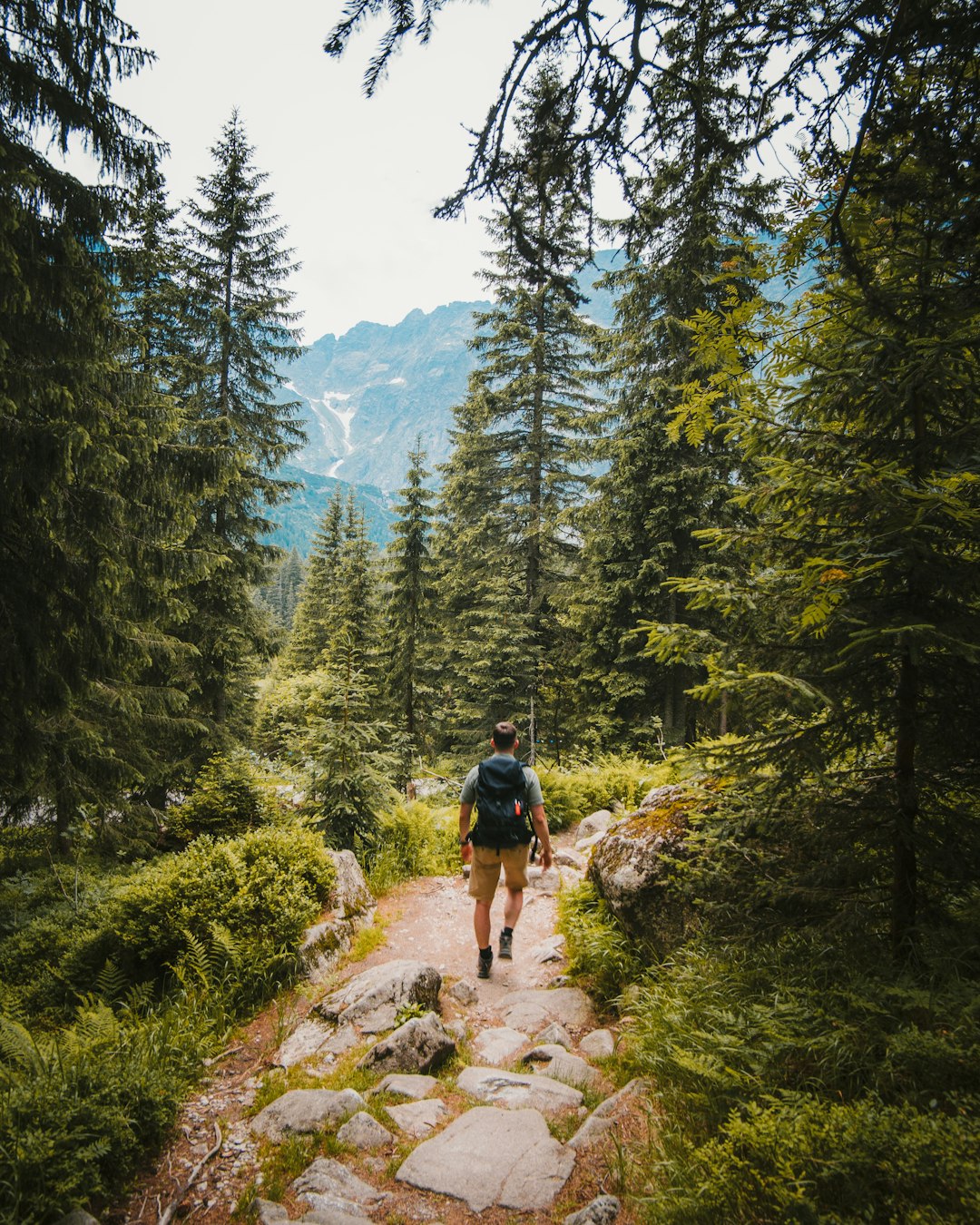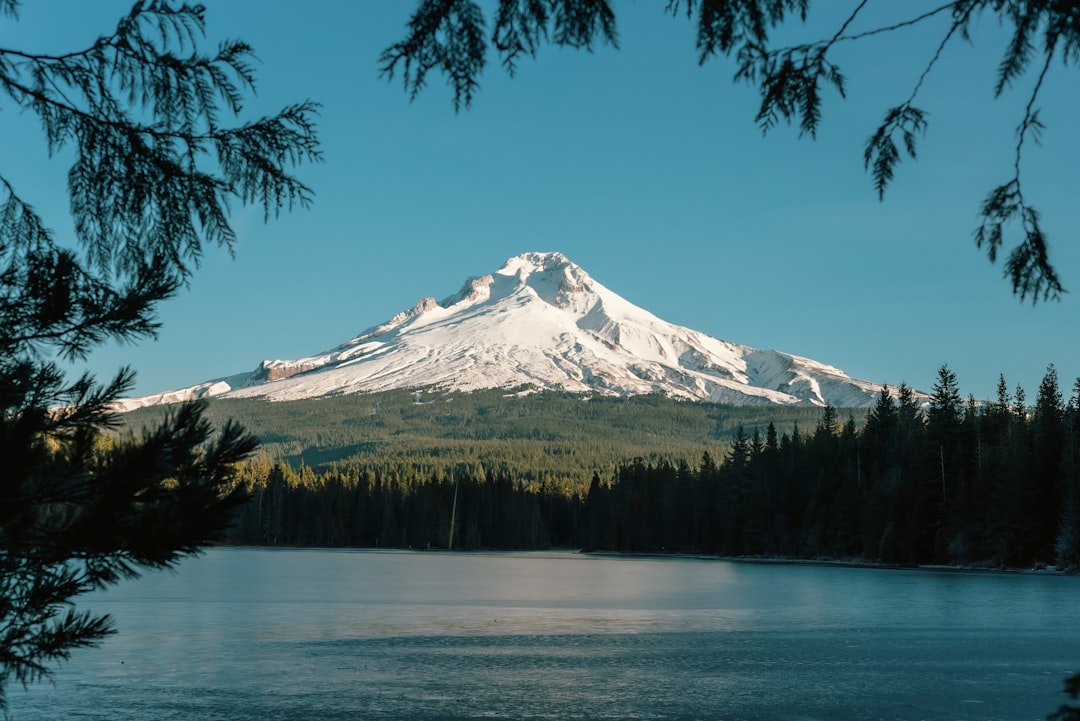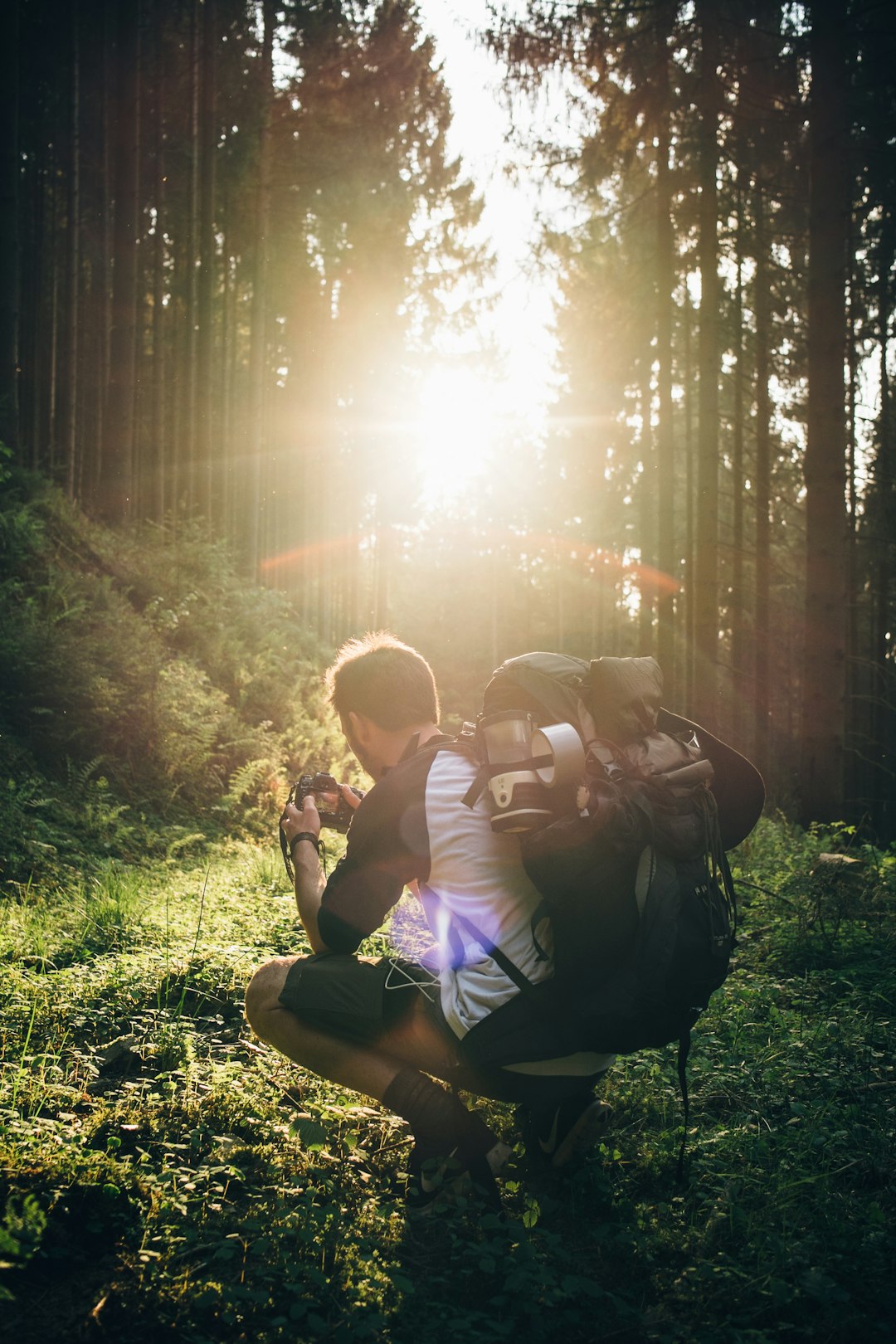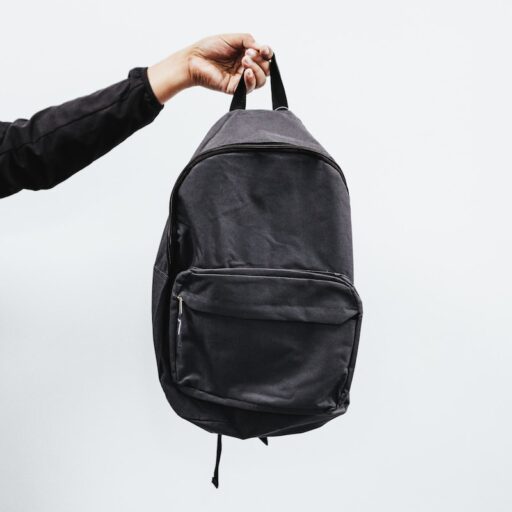Support our educational content for free when you purchase through links on our site. Learn more
What Is the Demographic of Backpacking? 15 Surprising Facts (2025) 🎒

Ever wondered who’s really behind that well-worn backpack trekking through bustling cities or remote mountain trails? Backpacking might seem like a youthful rite of passage, but the truth is far more colorful—and surprising! From solo female travelers breaking records to digital nomads blending work and wanderlust, the demographic of backpacking is evolving faster than you can zip up your pack.
In this deep dive, we unravel 15 eye-opening facts about backpacking demographics in 2025. Who’s carrying the load by age, gender, income, and geography? How do motivations, technology, and sustainability shape the modern backpacker? Whether you’re a first-timer or a seasoned globetrotter, understanding these trends will help you choose the perfect gear and plan your next adventure with confidence.
Ready to discover the faces behind the backpacks and what they mean for the future of travel? Let’s unpack the data and stories that will change how you see backpacking forever.
Key Takeaways
- Millennials and Gen Z dominate backpacking, but travelers in their 30s and beyond are rapidly growing.
- Solo female backpackers are surging, reshaping safety and gear preferences.
- Asia-Pacific is the fastest-growing backpacking market, while Europe and North America remain strongholds.
- Digital nomads and eco-conscious travelers are expanding the backpacking demographic beyond students and budget travelers.
- Tech-friendly, sustainable, and ergonomic backpacks from brands like Osprey, Nomatic, and Patagonia lead the market.
- Social media drives destination popularity and gear trends, especially among younger backpackers.
Ready to find your perfect backpack?
- Shop top-rated backpacks from Osprey | Samsonite | Nomatic | Patagonia and gear up for your next adventure!
Table of Contents
- Quick Tips and Facts About Backpacking Demographics 🎒✨
- Backpacking Demographics Unpacked: A Historical & Cultural Overview 🌍📜
- Who’s Carrying the Load? Age Groups and Backpacking Trends by Generation 👶👵
- Gender Breakdown: Are Backpackers Mostly Men, Women, or Non-Binary? 🚻
- Geography Matters: Backpacking Popularity by Region and Country 🌎✈️
- Backpacking Styles & Preferences by Demographic Segments 🏕️🎒
- Economic Factors: Income Levels and Backpacking Habits 💰🎒
- Education and Backpacking: Who’s More Likely to Hit the Trails? 🎓🗺️
- Motivations Behind Backpacking: Adventure, Culture, or Budget Travel? 🤔🌄
- Technology and Backpacking: How Digital Natives Are Changing the Game 📱🌐
- Backpacking Gear Preferences by Demographic: What’s in Your Pack? 🎒🔍
- Backpacking and Social Media Influence: Who’s Posting and Why? 📸🌟
- Sustainability and Backpacking: Demographic Trends in Eco-Friendly Travel 🌿♻️
- Challenges Faced by Different Backpacking Demographics 🚧⚠️
- Backpacking Market Insights: Consumer Behavior and Spending Patterns 📊💼
- Future Trends: How Backpacking Demographics Are Evolving in 2025 and Beyond 🔮🚀
- Conclusion: What Backpacking Demographics Tell Us About the Traveler of Tomorrow 🎯🧳
- Recommended Links for Backpacking Demographic Research 📚🔗
- FAQ: Your Burning Questions About Backpacking Demographics Answered ❓🎒
- Reference Links: Data Sources and Further Reading 📑🔍
Quick Tips and Facts About Backpacking Demographics 🎒✨
Before we dive deep into the world of backpacking demographics, here’s a quick cheat sheet from the Backpack Brands™ team to get you started:
- Age Range: Most backpackers fall between 20-30 years old, but the 30-40 crowd is growing steadily. Millennials dominate the scene, but Gen Z is catching up fast. Check out our detailed Backpack Statistics by Age for more insights.
- Gender Trends: Solo female travelers are on the rise, with an 88% increase in bookings between 2015-2019. Women now make up a significant chunk of backpackers, especially in the 16-23 age group.
- Geography: North America and Europe lead in backpacking popularity, but Asia-Pacific is the fastest-growing market with a projected CAGR of 12%.
- Purpose: Culture, adventure, and budget travel top the list of motivations. Backpackers want authentic experiences, not just sightseeing.
- Accommodation: Over 80% stay in hostels, with Airbnb usage growing. Price, location, and social atmosphere are key factors.
- Economic Factors: Backpacking isn’t just for students anymore. Digital nomads and working travelers are reshaping the demographic profile.
- Gear Preferences: Lightweight, durable, and tech-friendly backpacks (think Osprey, Samsonite, and Deuter) are favored. Nylon remains the material of choice for its water resistance and durability.
- Social Media Impact: Instagram and TikTok fuel the wanderlust fire, especially among younger backpackers.
- Sustainability: Eco-conscious travel is trending, with many backpackers seeking sustainable gear and practices.
Want to know how these facts translate into real-world trends and what it means for your next trip? Keep reading!
Backpacking Demographics Unpacked: A Historical & Cultural Overview 🌍📜
Backpacking has evolved from a niche, counter-culture activity into a mainstream travel style embraced worldwide. But who started it all, and how did the demographic landscape shift over time?
The Roots of Backpacking Culture
Backpacking’s modern roots trace back to the post-WWII era when young Europeans, especially from the UK, began traveling cheaply across the continent with just a bag and a dream. The “Hippie Trail” of the 1960s and 70s popularized long-term, low-budget travel, mostly among young adults seeking cultural immersion and adventure.
Demographic Shifts Over Decades
- 1960s-1980s: Predominantly young, white, Western males and students.
- 1990s-2000s: Rise of female backpackers and more diverse age groups. Students still dominated but digital connectivity began to influence travel styles.
- 2010s-Present: Millennials and Gen Z dominate, with solo female travelers surging. Backpacking is no longer just for students; digital nomads and working professionals are joining the ranks.
Cultural Impact
Backpacking has become a symbol of freedom, self-discovery, and cultural exchange. However, it has also faced criticism for environmental impact and cultural insensitivity, prompting a growing movement toward sustainable and responsible backpacking.
For a thorough dive into backpacking history and culture, check out Backpack Trends.
Who’s Carrying the Load? Age Groups and Backpacking Trends by Generation 👶👵
Let’s talk numbers and generations — who’s really out there with a pack on their back?
Age Breakdown
| Age Group | % of Backpackers (2023) | Key Characteristics |
|---|---|---|
| 16-23 years | 40% | Students, first-time travelers, social media savvy |
| 24-30 years | 35% | Millennials, digital nomads, career-break travelers |
| 31-40 years | 15% | Established professionals, family travelers with kids |
| 41-55 years | 7% | Experienced travelers, often luxury backpackers |
| 55+ years | 3% | Retirees, slow travel enthusiasts |
Fun Fact: The proportion of backpackers in their 30s has doubled since the early 2000s, showing that backpacking isn’t just a young person’s game anymore. (Source: The Broke Backpacker)
Generational Preferences
- Gen Z: Craves authentic experiences, often influenced by social media trends. Prefers budget-friendly, tech-enabled gear.
- Millennials: The largest group, balancing adventure with comfort. Many embrace the digital nomad lifestyle.
- Gen X & Boomers: More likely to invest in quality gear and longer, slower trips.
Backpack Brands Popular by Age
- Younger Backpackers: Osprey Daylite, Deuter Speed Lite
- Older Backpackers: Gregory Baltoro, The North Face Recon
Explore more about age-related backpack trends in our Backpack Reviews.
Gender Breakdown: Are Backpackers Mostly Men, Women, or Non-Binary? 🚻
The backpacking world is seeing a fascinating gender shift that’s reshaping the travel landscape.
Women on the Rise
- Solo female travel bookings increased by 88% between 2015-2019 (Hostelworld data).
- Among 16-23-year-olds, 75% of young women have backpacked or plan to, compared to 67% of men.
- Women are leading the charge in sustainable and culturally immersive travel.
Men’s Trends
- Traditionally dominant, men still make up a large portion of backpackers, especially in adventure and outdoor niches.
- More men are embracing solo travel, but the gap is narrowing.
Non-Binary and Inclusive Travel
- Though data is limited, the backpacking community is increasingly welcoming non-binary and LGBTQ+ travelers. Brands like Patagonia and REI are promoting inclusivity in gear and marketing.
Challenges and Safety
Women and non-binary travelers often face unique safety concerns on the road, influencing destination choices and travel styles. Backpack Brands™ recommends gear with security features like lockable zippers and RFID protection.
For more on gender and travel, see our Fashion Backpacks section focusing on style and safety.
Geography Matters: Backpacking Popularity by Region and Country 🌎✈️
Where are backpackers flocking to, and why? Geography plays a huge role in shaping demographics.
Regional Popularity
| Region | Market Share (2023) | Growth Rate (CAGR) | Top Backpacking Destinations |
|---|---|---|---|
| North America | 41.44% | 2.5% | USA (Appalachian Trail), Canada (Banff) |
| Europe | 30% | 5.5% | Spain, Italy, France, Eastern Europe |
| Asia-Pacific | 20% | 12% | Thailand, Vietnam, Japan, Australia |
| South America | 5% | 7% | Peru, Brazil, Colombia |
| Africa | 3% | 4% | South Africa, Morocco, Kenya |
(Source: KMA Travel Backpack Statistics 2024)
Why These Regions?
- Europe: Rich history, affordable hostels, and well-established backpacker routes.
- Asia-Pacific: Rapid growth due to affordability, exotic culture, and increasing infrastructure.
- North America: Popular for nature lovers and long-distance hikers.
- South America & Africa: Off-the-beaten-path appeal, adventure travel hotspots.
Urban vs. Rural Backpacking
Urban backpacking (hostels, city tours) dominates in Europe and Asia, while rural and wilderness backpacking is more popular in North America and South America.
Backpacking Styles & Preferences by Demographic Segments 🏕️🎒
Backpacking isn’t one-size-fits-all. Different demographics have distinct styles and preferences.
1. Student & Budget Backpackers
- Prioritize affordability and social experiences.
- Stay mostly in hostels and use public transport.
- Gear: Lightweight, multi-purpose backpacks like Osprey Farpoint 40.
2. Digital Nomads & Working Travelers
- Need tech-friendly backpacks with laptop compartments and charging ports.
- Prefer co-working spaces and longer stays.
- Gear: Samsonite Xenon 3.0, Nomatic Navigator.
3. Adventure & Outdoor Enthusiasts
- Focus on durability, weather resistance, and ergonomic design.
- Gear: Deuter Aircontact, Gregory Baltoro.
4. Luxury & Slow Travelers
- Opt for stylish, high-end backpacks with premium materials.
- Stay in boutique hostels or Airbnbs.
- Gear: Tumi Alpha Bravo, Herschel Little America.
Table: Backpack Style vs. Demographic
| Style | Age Group | Key Features | Popular Brands |
|---|---|---|---|
| Budget Backpacking | 16-25 | Lightweight, affordable | Osprey, REI, Kelty |
| Digital Nomad | 25-40 | Tech compartments, sleek design | Samsonite, Nomatic |
| Adventure Hiking | 20-50 | Durable, ergonomic, weatherproof | Deuter, Gregory |
| Luxury Travel | 30+ | Stylish, premium materials | Tumi, Herschel |
Economic Factors: Income Levels and Backpacking Habits 💰🎒
Backpacking used to be synonymous with tight budgets and student travel, but the economic landscape is shifting.
Income & Backpacking
- Backpackers now come from a wide range of income levels, from students to high-earning digital nomads.
- Higher income travelers tend to invest in premium gear and longer trips.
- Lower income travelers prioritize budget accommodations and shorter trips.
Spending Patterns
- US backpackers spend on average $4,474 per year on travel, more than regular leisure travelers.
- European backpackers average around $3,871 per trip.
- Spending is shifting from just accommodation to experiences, gear, and local culture.
Impact of COVID-19
The pandemic caused a dip in backpacking but accelerated remote work, enabling more people to combine work and travel, thus expanding the demographic.
Education and Backpacking: Who’s More Likely to Hit the Trails? 🎓🗺️
Education level correlates strongly with backpacking participation.
Key Insights
- Students and recent graduates make up a large portion of backpackers, but their share has decreased from 65% in 2002 to 49% in 2017.
- Higher education levels correlate with increased interest in cultural immersion and language learning during backpacking.
- Backpackers with college degrees are more likely to plan trips in advance and seek sustainable travel options.
Why Education Matters
Educated travelers often seek deeper cultural experiences and are more aware of responsible travel practices, influencing their choice of destinations and gear.
Motivations Behind Backpacking: Adventure, Culture, or Budget Travel? 🤔🌄
Why do people choose backpacking? The reasons are as diverse as the travelers themselves.
Top Motivations
- Cultural Immersion: Nearly 40% of backpackers cite experiencing new cultures as their primary motivation.
- Adventure & Nature: Outdoor activities and exploration are huge draws, especially for younger backpackers.
- Budget Travel: Backpacking remains one of the most affordable ways to travel long-term.
- Self-Discovery: Many use backpacking as a journey of personal growth and freedom.
- Social Connections: Hostels and group tours offer a social atmosphere that appeals to solo travelers.
Changing Motivations
With the rise of digital nomads and eco-conscious travelers, motivations now also include work flexibility and sustainability.
Technology and Backpacking: How Digital Natives Are Changing the Game 📱🌐
Technology is reshaping backpacking demographics and experiences.
Tech Trends in Backpacking
- Smart Backpacks: Features like wireless charging, GPS tracking, and built-in lights are gaining popularity.
- Booking & Planning: Apps like Hostelworld and Airbnb dominate accommodation bookings.
- Social Media: Platforms like Instagram and TikTok influence destination choices and travel styles.
- Remote Work: Laptops, portable Wi-Fi, and co-working spaces enable longer, work-travel combos.
Popular Tech-Friendly Backpacks
- Nomatic Navigator: Known for tech compartments and sleek design.
- Samsonite Xenon 3.0: Durable with smart features.
- Osprey Nebula: Great for day trips with tech gear.
Backpacking Gear Preferences by Demographic: What’s in Your Pack? 🎒🔍
Gear choices reveal a lot about the backpacker’s profile.
Material Preferences
- Nylon dominates for its durability and water resistance.
- Recycled materials are trending among eco-conscious travelers.
Size & Capacity
| Demographic | Typical Backpack Size | Popular Models |
|---|---|---|
| Students & Budgeters | 30-40L | Osprey Farpoint 40, Deuter Speed Lite |
| Digital Nomads | 40-50L | Nomatic Navigator, Samsonite Xenon |
| Adventure Hikers | 50-70L | Gregory Baltoro, Deuter Aircontact |
| Luxury Travelers | 20-30L | Tumi Alpha Bravo, Herschel Little America |
Features in Demand
- Laptop compartments
- Hydration reservoirs
- Anti-theft zippers and RFID protection
- Ergonomic straps and ventilation
Backpacking and Social Media Influence: Who’s Posting and Why? 📸🌟
Social media isn’t just a travel diary; it’s a powerful influencer of backpacking demographics.
Who’s Posting?
- Millennials and Gen Z dominate travel content creation.
- Solo female travelers are among the most active sharers, inspiring others to hit the road.
- Influencers and micro-influencers shape destination popularity.
Why Post?
- To document experiences and memories.
- To inspire others and build community.
- To monetize travel through sponsorships and partnerships.
Impact on Gear and Destinations
Brands like Osprey and Patagonia often collaborate with influencers, driving sales and trends. Destinations popularized on Instagram see spikes in backpacker visits, sometimes leading to overtourism concerns.
Sustainability and Backpacking: Demographic Trends in Eco-Friendly Travel 🌿♻️
Sustainability is no longer a niche concern; it’s a major factor shaping backpacking demographics.
Who Cares Most?
- Younger backpackers (Gen Z and Millennials) prioritize eco-friendly gear and practices.
- Female travelers tend to be more conscious of sustainability issues.
- Digital nomads often choose slow travel and local experiences to reduce carbon footprints.
Sustainable Gear Trends
- Backpacks made from recycled materials (e.g., Patagonia Arbor Grande).
- Brands offering repair programs and lifetime warranties (e.g., Osprey).
- Minimalist packing to reduce weight and waste.
Challenges
- Balancing affordability with sustainability can be tough for budget travelers.
- Some destinations struggle with managing increased backpacker traffic sustainably.
Challenges Faced by Different Backpacking Demographics 🚧⚠️
No backpacking journey is without its bumps. Different demographics face unique hurdles.
Safety Concerns
- Solo female and non-binary travelers often worry about harassment and safety.
- Older backpackers may face physical challenges on rugged trails.
Financial Barriers
- Low-income travelers struggle with rising accommodation and transport costs.
- Students may have limited time and resources.
Cultural Barriers
- Language and cultural differences can be daunting, especially for first-timers.
- Some ethnic minorities report feeling unwelcome or underrepresented in backpacking communities. (Source: LCV.org)
Gear and Comfort
- Finding the right gear that balances weight, comfort, and durability is a constant challenge.
- Tech needs vary widely by demographic.
Backpacking Market Insights: Consumer Behavior and Spending Patterns 📊💼
Understanding the market helps us see who’s buying what and why.
Market Size & Growth
- The global backpack market was valued at $24 billion in 2023, with travel backpacks making up over 20% of revenue.
- Asia-Pacific is the fastest-growing market, projected to grow at 12% CAGR through 2029.
- Offline retail still dominates but online sales are surging.
Consumer Preferences
- Nylon backpacks lead due to durability and water resistance.
- Premium segments (40% market share) are growing as travelers invest more in quality gear.
- Sports and outdoor backpacks hold the largest market share.
Key Players
- Samsonite, Osprey, VF Corporation, Victorinox, and Traveler’s Choice dominate the market.
- Emerging brands focus on sustainability and tech integration.
For more on market trends, visit our Backpack Trends section.
Future Trends: How Backpacking Demographics Are Evolving in 2025 and Beyond 🔮🚀
What’s next for backpacking demographics? Here’s what Backpack Brands™ predicts:
Increasing Diversity
- Efforts to make backpacking more inclusive will grow, welcoming more ethnic minorities and LGBTQ+ travelers.
- Public lands and outdoor spaces will become more accessible.
Tech Integration
- Smart backpacks with real-time tracking and solar charging will become mainstream.
- Virtual reality and AI trip planning tools will change how backpackers prepare.
Sustainability Focus
- Eco-friendly gear and carbon offset travel will be standard.
- Slow travel and local immersion will continue to rise.
Changing Travel Patterns
- Shorter, more frequent trips instead of year-long adventures.
- More solo travel, especially among women.
Gear Innovation
- Lightweight, modular backpacks tailored to individual needs.
- Increased use of recycled and biodegradable materials.
Stay ahead of the curve by following our Brand Spotlights and Backpack Types for the latest innovations.
Ready to pack your bag with confidence? Our next section will wrap it all up with key takeaways and expert recommendations!
Conclusion: What Backpacking Demographics Tell Us About the Traveler of Tomorrow 🎯🧳

After trekking through the fascinating landscape of backpacking demographics, one thing is crystal clear: backpacking is no longer just a rite of passage for young students or thrill-seeking twenty-somethings. It’s a vibrant, evolving community that spans generations, genders, income levels, and cultures. From the solo female traveler blazing new trails to the digital nomad blending work and wanderlust, backpacking has become a multifaceted lifestyle.
Key takeaways:
- The 20-30 age group still dominates, but the 30s and beyond are catching up fast, proving that backpacking is for life, not just youth.
- Women, especially solo travelers, are reshaping the demographic, demanding safer, more inclusive gear and experiences.
- Geography influences not only where backpackers go but also what gear they choose—urban explorers favor sleek, tech-friendly packs, while outdoor adventurers need rugged, durable designs.
- Sustainability and technology are no longer optional—they’re essential, especially for younger generations who want to travel responsibly without sacrificing convenience.
At Backpack Brands™, we see this diversity reflected in the gear market: brands like Osprey and Deuter lead for durability and comfort, Samsonite and Nomatic cater to tech-savvy nomads, and Patagonia champions sustainability. Whether you’re a budget-conscious student or a luxury slow traveler, there’s a perfect backpack waiting for you.
So, what’s the bottom line? Choose your backpack not just by style or price, but by how well it fits your unique travel lifestyle and demographic profile. The right pack will carry your dreams as much as your gear.
Ready to find your perfect match? Dive into our Backpack Reviews and Brand Spotlights to explore the best options tailored to your needs.
Recommended Links for Backpacking Demographic Research 📚🔗
Looking to gear up or deepen your knowledge? Here are some top picks from Backpack Brands™:
- 👉 Shop Osprey Backpacks on:
Amazon | REI | Osprey Official Website - 👉 Shop Samsonite Travel Backpacks on:
Amazon | Walmart | Samsonite Official Website - 👉 Shop Nomatic Backpacks on:
Amazon | Nomatic Official Website - 👉 Shop Deuter Hiking Backpacks on:
Amazon | Backcountry | Deuter Official Website - 👉 Shop Patagonia Sustainable Backpacks on:
Amazon | Patagonia Official Website
Recommended Books on Backpacking & Travel Culture
- Vagabonding: An Uncommon Guide to the Art of Long-Term World Travel by Rolf Potts — Amazon Link
- The Backpacker’s Handbook by Chris Townsend — Amazon Link
- How to Travel the World on $50 a Day by Matt Kepnes — Amazon Link
FAQ: Your Burning Questions About Backpacking Demographics Answered ❓🎒

What age group is most likely to go backpacking and what are their preferences when it comes to backpack brands?
The 20-30 year-olds dominate backpacking, comprising roughly 75% of backpackers globally. This group values lightweight, versatile backpacks that can handle both urban and outdoor environments. Brands like Osprey and Deuter are favorites due to their balance of comfort and durability. Younger backpackers also lean toward tech-friendly features, making Nomatic and Samsonite popular among digital nomads in their late 20s and early 30s. Older backpackers (30-50+) often prefer larger, ergonomic packs with premium materials, such as Gregory or The North Face.
What are the most popular backpacking destinations among different demographics and how do they impact backpack sales?
Popular destinations vary by age, income, and travel style:
- Younger backpackers (16-25) flock to affordable, culturally rich spots like Thailand, Vietnam, and Spain, favoring lightweight, budget-friendly backpacks.
- Millennials and Gen X (25-40) often explore a mix of urban and adventure destinations, such as Europe’s cities and North America’s national parks, requiring versatile packs with tech compartments.
- Older travelers (40+) tend to choose slower, luxury or nature-focused trips, influencing demand for premium, comfortable backpacks.
These destination preferences drive sales toward specific backpack types: ultralight packs for Southeast Asia, rugged hiking packs for North America, and stylish travel packs for Europe.
How do different demographics influence the design and features of backpacks, and which brands cater to these needs?
Demographics shape backpack design significantly:
- Students and budget travelers want affordability, durability, and simplicity — brands like Kelty and REI Co-op excel here.
- Digital nomads demand tech integration (laptop sleeves, charging ports), sleek aesthetics, and security features; Nomatic and Samsonite lead this niche.
- Adventure seekers prioritize weather resistance, ergonomic support, and capacity — Deuter, Gregory, and Osprey dominate.
- Eco-conscious travelers look for sustainable materials and ethical production, with Patagonia and Fjällräven as top choices.
What are the key factors that backpackers from various demographics consider when choosing the perfect backpack brand, such as durability, comfort, or style?
Backpackers weigh several factors differently depending on their profile:
- Durability: Critical for outdoor enthusiasts and long-term travelers. Brands like Osprey and Deuter are renowned for this.
- Comfort: Ergonomic design and adjustable straps matter most for hikers and older travelers.
- Style: Younger and urban travelers often prioritize aesthetics and brand image, favoring brands like Herschel or Tumi.
- Functionality: Tech compartments, anti-theft features, and modularity appeal to digital nomads and solo female travelers.
- Sustainability: Increasingly important for millennials and Gen Z, influencing choices toward brands with eco-friendly practices.
How does solo travel influence backpacking demographics and gear choices?
Solo travel, especially among women, has surged, now making up a significant portion of backpackers. Solo travelers prioritize security features like lockable zippers and RFID protection, lightweight packs for ease of movement, and gear that supports self-sufficiency. Brands like Pacsafe specialize in anti-theft backpacks, while Osprey offers versatile packs suited for solo adventurers.
What role does social media play in shaping backpacking demographics and trends?
Social media platforms like Instagram and TikTok have transformed backpacking by inspiring younger generations to explore new destinations and styles. Influencers often showcase specific gear brands, driving trends and sales. This digital exposure encourages more diverse demographics to take up backpacking, including previously underrepresented groups.
Reference Links: Data Sources and Further Reading 📑🔍
- KMA Travel Backpack Statistics 2024 — Comprehensive market and demographic data.
- LCV.org Blog on Backpacking Diversity — Insightful analysis on racial and socioeconomic diversity in backpacking.
- The Broke Backpacker: Backpacker Statistics — Detailed demographic and travel behavior stats.
- Osprey Official Website — Leading backpack brand known for durability and comfort.
- Samsonite Official Website — Tech-savvy and travel-friendly backpacks.
- Nomatic Official Website — Innovative backpacks for digital nomads.
- Patagonia Official Website — Sustainable gear pioneers.
- Hostelworld — Data on solo female travel trends and bookings.
For a deep dive into backpacker demographics and trends, don’t miss the comprehensive Backpacker Statistics 2025 | AWESOME Statistics on Traveling.
Ready to hit the trail with confidence? Your perfect backpack awaits! 🎒✨





